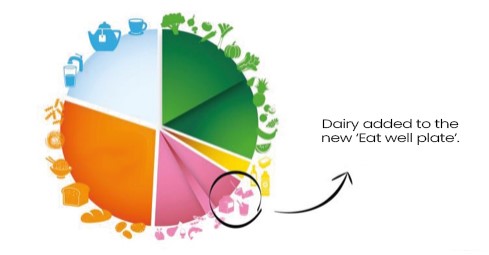The eatwell Guide
The National Health Service of the UK offers reliable information about nutrition and wants to help you make healthier, more sustainable choices.
What is healthy eating with the eatwell guide?
You want to take care of your body as best as possible. But how do you do that? If you eat according to the eatwell guide, you’ll eat enough of all products that provide you with health benefits, plus all the necessary nutrients to get fit for the day.
The eatwell guide consists of 5 boxes full of good products to choose from.
Everyone makes their own eatwell guide
Whether you mainly cook a classic English dish or are completely at home in the oriental cuisine, whether you cook vegetarian or like to eat a piece of meat: there are endless possibilities within the eatwell guide.
Eating healthy with the Eatwell guide is good for your body
The basis of the Eatwell guide consists of products that are good for your body according to the latest scientific insights. Because they reduce the risk of cardiovascular disease and cancer, for example. If you eat according to the Eatwell guide, you also get enough minerals, vitamins, proteins, carbohydrates, fats and fibre. If you do not choose for products that are outside the Eatwell guide too guide, you will maintain your weight more easily and increase the chance of getting old healthy. Moreover, the Eatwell guide helps you to eat in a more environmentally friendly way.
What’s in the Eatwell guide?
- Lots of fruits and vegetables
- Especially whole wheat, such as whole wheat bread, whole wheat pasta and couscous and brown rice
- Less meat and more vegetable. Vary with fish, legumes, nuts, eggs and vegetarian products
- Enough low-fat and semi-skimmed dairy, such as milk, yogurt and cheese
- A handful of unsalted nuts
- Soft or liquid spreading and cooking fats, such as oil, low-fat margarine and liquid shortening and frying fat.
- Sufficient moisture, such as tap water, tea and coffee
The boxes of the Eatwell guide?
- Vegetables and fruit
- Bread, grain products and potatoes
- Dairy and dairy alternatives
- Spreading and cooking fats
- Fish, legumes, meat, egg, nuts and dairy
Let’s get healthy!
